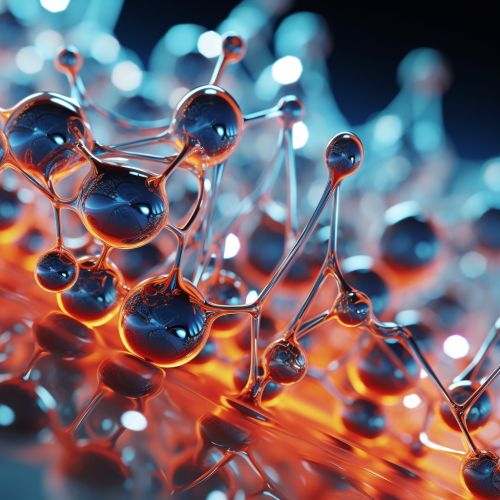Liquid crystals
Introduction
Liquid crystals (LCs) are a state of matter that has properties between those of conventional liquid and those of solid crystal. They were first discovered in 1888 by Austrian botanist Friedrich Reinitzer, and the term "liquid crystal" itself was coined shortly afterwards by German physicist Otto Lehmann.
Liquid crystals are partially ordered systems without a rigid, long-range structure. The orientational order of a liquid crystal may be either uniaxial or biaxial, and different phases are characterized by different types of positional order. When viewed under a microscope using a polarized light source, different liquid crystal phases will appear to have distinct textures.
The contrasting areas in the textures correspond to domains where the liquid crystal molecules are oriented in different directions. Within a domain, however, the molecules are well ordered. LC materials may not always be in a liquid-crystal phase.


Types of Liquid Crystals
Liquid crystals can be divided into thermotropic, lyotropic and metallotropic phases. Thermotropic and lyotropic liquid crystals consist mostly of organic molecules, although a few minerals are also known. Thermotropic LCs exhibit a phase transition into the liquid-crystal phase as temperature is changed. Lyotropic LCs exhibit phase transitions as a function of both temperature and concentration of the liquid-crystal molecules in a solvent (typically water).
Metallotropic LCs are composed of both organic and inorganic molecules; their liquid-crystal transition depends not only on temperature and concentration, but also on the inorganic-organic composition ratio.
Thermotropic Liquid Crystals
Thermotropic liquid crystals form the largest category of liquid-crystal substances. They are generally used in research and industry. Their molecules are able to show positional order or molecular axis orientation order, or both. The thermotropic liquid crystals are further subdivided into smectic, nematic, and cholesteric phases.
Smectic Phase
The smectic phase is characterized by layers of molecules stacked on top of each other. In the smectic phase, the molecules are oriented along the layer normal and are arranged in layers. This phase is further divided into several other phases, named smectic A, smectic B, smectic C, and so on.
Nematic Phase
The nematic phase is characterized by molecules that have no positional order but tend to point in the same direction. In this phase, the molecules are oriented in parallel but are not arranged in layers. The nematic phase is the simplest form of liquid crystal, and it is also the type most commonly used in liquid-crystal technology.
Cholesteric Phase
The cholesteric phase, also known as the chiral nematic phase, is a variant of the nematic phase. The molecules in this phase are arranged in layers, with the direction of the molecules in each layer being slightly rotated with respect to the adjacent layers, forming a helical structure.
Lyotropic Liquid Crystals
Lyotropic liquid crystals are formed by the addition of a solvent to a liquid-crystal substance. They are used in the manufacture of soaps and detergents, and also have potential applications in drug delivery systems. The phase transitions in lyotropic liquid crystals are dependent on temperature and concentration of the liquid-crystal molecules in the solvent.
Metallotropic Liquid Crystals
Metallotropic liquid crystals are a relatively new member of the liquid-crystal family. They are composed of both organic and inorganic components and exhibit liquid-crystal behavior either as a function of temperature alone (thermotropic metallotropic liquid crystals) or as a function of temperature and composition (lyotropic metallotropic liquid crystals).
Applications of Liquid Crystals
Liquid crystals find wide application in liquid crystal displays (LCDs), which are used in computer monitors, television screens, and instrument panels. They are also used in thermometers, due to their temperature-sensitive color changes, and in soaps and detergents due to their ability to form lyotropic phases.
